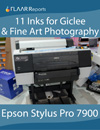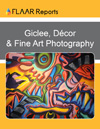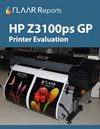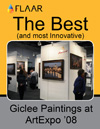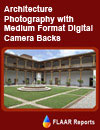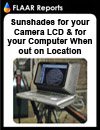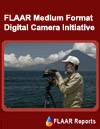Lexar memory card finally fails totally:
but kindly replaced by Lexar
Updated January 2017; first posted November 28, 2016
 |
We have a nice 1000x (speed), 128GB, SDxc memory card from Lexar.
But the unLOCK button slides to LOCK position when we insert the card into the camera.
We have never had this problem with any other brand of memory card (as you can guess, we test cards of many brands).
At Photokina we noticed several other brands which we look forward to evaluating in the future.
If Lexar has a better card that they can send us, then we will give it a try. But in the meantime, I am really disappointed at this issue with this Lexar memory card.
Lexar did have the courtesy to send us a replacement card, and as soon as I fly to my USA office I will pick it up. Hopefully it will last an adequate time.
![]()
Dr. Nicholas and two assistants are attending Photokina 2016
Updated Oct 12, from original post August 8, 2016
SAVAGE Universal had a nice booth filled with all kinds of products we have not noticed there in earlier years. We are interested in many of their new products. We will do a separate page on SAVAGE products as soon as possible.
SWAROVSKI OPTIK offers digiscoping combinations. In a few months they should have new models which we would like to evaluate for opening up potential new markets (more than bird photography). We feel that more photographers should learn the differences between a SWAROVSKI telescope on your camera compared to a normal telephoto lens.
The Leica and Sinar booth was hospitable. The new model of the Leica S system is a medium-format camera we could definitely compare with our past years experience with Hasselblad, Leaf, Phase One, and other high resolution cameras. Since we had attended three international trade shows before Photokina and attended two more after Photokina, the overall trip was about 46,000 miles (about 74,000 kilometers) of flights to three continents in just one month. But as soon as possible we will update pertinent pages on this digital photography site.
During early December we will take 15 of our staff in three 4WD vehicles to remote jungle-covered mountain areas of Guatemala. This would be a great place to test, evaluate and write reviews on the new products we saw at Photokina.
The FLAAR team of PRESS consists of Dr Nicholas, camera and photography editor Erick Flores, and camera and photography assistant editor Senaida Ba. Back in our home office there are about 25 of us on the FLAAR teams.
![]()
Photographing flowers with light-and-shadow style, using sunlight
Posted April 6, 2016
Cordia dodecandra, ciricote (pronounced more like siricote) is photogenic because of the potential of light-and-shadow.
Here we are far from civilization so there is no electricity for a portable studio. Although many flowers are best photographed with an overcast sky, this shape of flower is best in full sun. But you have to look for the best angle of the flower itself, and relative to light and shadow on the petals.
We at FLAAR specialize in photographing native Neotropical flowers of Guatemala. Nicholas Hellmuth has been visiting Guatemala since about age 17 or 18, circa 1963.
Every several years (over the last 10 years) we have refined our manner of photography. Dr Nicholas has his own style; Sofia Monzon has her different style. The photos from this week (April 2016) are NOT examples of fine art photograph style because the tree was so high we could not get the camera to see the front of the flower. We had to use a 200mm Nikkor lens; on a Nikon D810.
If the limb had been lower, we could have moved it and used a plant clamp to keep the flowers at the precise angle where the lighting is best. But in the meantime, at least the image we captured reveals the inherent natural beauty of this flower of the Mayan Lowland area of El Peten, Guatemala, en route to the Las Guacamayas Biological Station.
![]()
This is a “Photokina year”
Posted Jan. 5, 2016, to start the New Year.
Updated Jan. 6, 2016.
Because Photokina is still worth attending, it is not worth trying to find what is left of old PMA. In recent years, PMA@CES was, at best, only barely viable. CES by itself is worth attending, and so if you are already in Las Vegas, perhaps there may be a remnant of PMA. However the www.pmai.org web site is so non-functional I could not even find a link to PMA at CES 2016. But Nikon introduced their new D5 this week at CES (not a peep about PMA).
PhotoPlus (Photo East, or whatever it is called), we used to attend every year except in a Photokina year, since 90% of what is in New York is better at Photokina. But if you live in New York then obviously PhotoPlus is worth attending. And, there are some 10% of brands at PhotoPlus in New York which are absent at Cologne, or if present at Photokina have more exhibits near their hometown in New York.
Photokina is no longer what it used to be, in part because no more Kodak hall, no more flatbed scanner exhibits, no more major printer exhibits (some, but not what it was 10 years ago). Kodak barely exists and when they exhibit, not much is exciting any more.
Most photography products are now from China, and this has knocked many of the previous prestige brands out of business, such as sending Metz into bankruptcy. No battery made in China functions adequately in a Metz flash Made in Germany. The old Metz batteries (Made in Germany) held up for 10 to 20 years. Their batteries recently (Made in China) barely held up for 20 months!
And tripods have gotten cheap and rinky dink. Fortunately I still have my original Gitzo tripods, the high ones. I have used sequential models of Gitzo tripods for over 30 years. For lighting I switched from my favorite (Lowell) to fluorescent from Westcott (since flowers can’t take the heat of tungsten halogen).
Nonetheless, for a serious photographer, whether pro, pro-sumer, hobby photographer, and especially if a student, we still recommend attending Photokina 2016. There is no photography trade show in China that comes close (for printers, nowadays APPPEXPO in Shanghai beats every other printer or signage expo for wide-format inkjet printers at introductory and mid-range). Plus, brands such as Phase One have awesome technology (I used to use only Hasselblad and Leica for decades; but I have not been inspired by either of these brands in the last ten years). My Nikon D812 achieves awesome results (although Phase One gray balance techniques are a thousand times better than anything offered by Canon or Nikon). Leaf was a brand that I enjoyed evaluating in past years, but have not had one now for many years.
I will also be curious to see what Sony offers at Photokina; not much new with Sony at CES 2016 this week.
So we hope to see you at Photokina 2016. Glasstek in Duesseldorf and a ceramic printer expo in Rimini, Italy are all the same week as Photokina. All three are worth attending. FLAAR Reports will be at all three.
In the meantime, we at FLAAR Reports will be issuing additional reviews of
• studio lighting (fluorescent vs tungsten halogen)
• ring-lights and other macro photography lighting
• light stands (high quality such as Avenger and Matthews C-Stands)
• Mirror-less cameras (such as Sony) compared with traditional DSLR
• 3D “scanning” techniques but using a normal DSLR camera
![]()
APPPEXPO 2016 in Shanghai, worth attending in March
Posted Dec. 20, 2015
FIVE of us will attend APPPEXPO 2016 in Shanghai. Yes, this printer & signage trade show has an exhibitor list big enough that we fly five FLAAR Reports evaluators to China.
Plus Shanghai is a beautiful peaceful city, so worth taking your employees (and your family) to visit. March 9, 10, 11, and 12, 2016.
For more information visit
www.apppexpo.com/index/2/EN
![]()
Once you have a great digital photograph
it helps to know all the options for wide-format enlargements
Posted August 5, 2015
Whether you do fine art photography, product photography, wedding photography, architectural photography, or any other theme, sooner or later you may wish to print your images in large format.
So it helps to learn about the different brands of printers. There is a lot more out there besides just Epson, HP and Canon. The best way to learn everything else which is available is to attend a signage expo, so two of us are flying to Istanbul this coming week.
Last week I attended another printer expo in Johannesburg (lecturing about printing on textiles). You should experiment with having your fine art photos printed on silk or other fabrics. Just be aware that not all colors reproduce well on textiles. And areas in shadow or dark colors tend to lose detail. This is why we attend printer trade shows, to learn about different inks and different materials, far more than fine art canvas or photo paper!
You can also print your photographs on thick and rigid material, and you can do a pseudo 3D printing also (we have FLAAR Reports on many aspects of 3D printing).
We hope to see you at Sign Istanbul 2015, 10-13 September, visible on www.IFO.com.tr or www.SignIstanbul.com.
![]()
SIGGRAPH 2015 is essential for students and faculty in addition to all individuals working in computer graphics
Posted June 16, 2015
Already twelve years ago FLAAR was invited to SIGGRAPH (2003), we exhibited in the guerilla studio. However this was not a commercial exhibit, this was an educational display to show our tests, evaluations, and review articles which we write.
And over half a million people read our press reports on wide-format inkjet printers, inks, substrates, and software.
Now, with an additional decade of experience, we will be attending SIGGRAPH to write about it so our almost half a million people a year (who read our reports on digital photography equipment) can learn about SIGGRAPH.
SIGGRAPH 2015,
conferences, 9-13 August 2015
Exhibition, 11-13-August 2015
Melanny Quinonez has been researching and writing about Wacom pen tablets and Andrea Mendoza has researched information related to 3D technologies.
 |
 |  |  |
 |
 |
![]()
Best 400mm prime telephoto lens? Nikon or Canon?
Posted May 25, 2015
Sorry Sigma and Tamron, but we have had bad experiences over the years and no longer test these brands (sorry, we do not receive kickbacks via sales commissions, so we don't push every brand just to get money (we have no spouse or children to support as seemingly do other camera PR people)).
Nikon or Canon for telephoto; and Schneider for normal lens sizes (Zeiss has not received good reviews recently, much to our surprise). We would also consider testing a Sony lens (if we had a Sony camera to use it on).
So now we test the high-end of 400mm telephoto lens, Nikon AF-S NIKKOR 400mm f/2.8E FL ED VR. It costs more than the normal Nikon 400mm and Canon 400mm if bought together!
Here is the lens being unpacked. We take the lens to the Cuchumatanes mountains of Highland Guatemala tomorrow morning, in a 4WD pickup, to photograph flowers. Yes, flowers, not birds.
We at FLAAR (Reports) evaluation institute do unique applications. Telephoto lenses are made for sports and birds. We will use test this lens for bird species of rivers, lakes, and both oceans of Guatemala later. But this week we focus on Magnolia quetzal species, a hard-to-find magnolia flower. This is not the garden variety magnolia of Florida or the rest of Southern USA.
As soon as we can test a Canon 300mm, 400mm, 500mm, or 600mm lens we will do so. To pay for the Nikon lens we will do a crowd-funding project (in the meantime, since our proposal is not yet posted, donations are welcomed at FrontDesk "at" FLAAR.org).
A review is more honest if we pay for the lens we are evaluating.
Here is Nicholas Hellmuth holding the new Nikkor Nikon AF-S NIKKOR 400mm f/2.8E FL ED VR prime telephoto lens which we just obtained for review for bird and flower photography in Guatemala. Photo assistant, Josefina Sequen, is at the right.
You can check our review on the Nikkor Nikon AF-S NIKKOR 400mm f/2.8E FL ED VR prime telephoto lens here, and our www.maya-ethnobotany.org page in wich we cover the Magnolia Quetzal using the Nikon 400mm Lens
![]()
Triple Level Sensors encourage misleading advertising claims
Posted March 19, 2015
The Foveon three-layer DSLR sensor a decade ago gushed out more PR releases than any other digital product of its time. Only Memjet (MEMS printheads) outdid Foveon on inflated claims.
We tested one of the early generation SIGMA cameras with a Foveon sensor (a decade ago) and found the color was inadequate and in general the results were not impressive. I would estimate that in the subsequent ten years they have improved all aspects, but any claim that a three-level sensor produces an image of huge megapixel size varies from ridiculous to dubious.
Already in 2013 there were news releases about 75 megapixel multi-layer sensors. But and If this is a triple-level sensor, then divide the silly exaggerated number by three and you find out that this is at most a 25 megapixel sensor exaggerated by 300 percent. So let us hope that the new 50 megapixel sensor is really one single layer at 50 megapixels, and not a PR exaggeration.
I can symphonize Canon desire to compete with Phase One, Leaf, and what is left of Hasselblad. 50 years ago I began using a Leica; then I moved up to Hasselblad, and from that to 4x5 Linhof and Cambo and then 8x10 Linhof.
In the digital world I have used medium format for many years: it is ironic that Kodak was an exceptional medium format back (the company was a disaster but their backs were great). I have used Leaf and Phase One and Hasselblad backs. These images blew away anything you could do with a Leica of past years. And Phase One and Leaf today, I am as content with them as with 4x5 Linhof, Rodenstock and Schneider lenses of 25 years ago.
I am content with my Nikon D800E and Canon EOS 1Ds Mark III because we do only macro photography (of flowers and insects), and only for web pages and PDFs. At this small size their quality is awesome (www.maya-ethnobotany.org shows examples with both).
But, sorry, if you do landscape or architectural photography, or photograph for billboards, I would definitely prefer a Phase One IQ160 or Leaf Credo 50.
Once it is clearly and openly stated who makes the sensor of the Canon EOS 5Ds and whether it is a traditional sensor or a multi-layer sensor, then I can update my comments. Presently the spec sheet says High-sensitivity, high-resolution, large single-plate CMOS sensor. I sure hope "single plate" is a single level sensor. If so, then this is acceptable as a true 50 megapixel sensor. But even with this, it will be tough for Canon (or Nikon) to beat Phase One and Leaf on overall hardware and software (such as Capture One).
![]()
Drones for doing photography of trees and archaeology
Posted Jan. 19, 2015
Although we could not inspect drones at CES 2015 (since FLAAR works in Dubai at SGI (aka Sign Middle East) the same week each year), we did inspect drones at Photokina 2014 in Cologne, Germany.
Now we are initiating long-term evaluation of drones and especially the cameras they carry. This past weekend we brought in an experienced drone pilot, Juan Carlos Fernandez, who used his drone to photograph giant Ceiba pentandra trees and the beautiful yellow flowers of palo blanco trees Tabebuia donnell-smithii in the Costa Sur area of Guatemala (not far from the Pacific Ocean, in Central America).
Once I saw the results on a full size Mac computer monitor, I immediately realized that the distortion of these ultra-wide-angle style drone cameras was not the kind needed for scientific measurement.

Here is a photograph of a Palo Blanco Tree, Tabebuia donnell-smithii, Photographed with a Phantom Vision Drone
The photos accomplished by Juan Carlos from the drone were spectacular but the lens is too wide-angle (because the standard cameras are for bikers and hikers, not for botanists or archaeologists).
We will now do further research to learn which drones and which cameras can provide results which are comparable to normal DSLR or even point-and-shoot digital cameras.
If you wish a drone to impress friends and relatives, any normal drone and its “GoPro” kind of camera is great. If you need drone services in Guatemala we recommend Juan Carlos Fernandez. And if you need to see considerable areas from above, the normal style drones are fine.
 |
| The drone, a Phantom Vision in action during our field trip. |
But if you seek to do 3D imaging, or any kind of measurement, the cameras on normal drones are too wide-angle (far too much circular distortion).
As time and funding permits, we will be updating our evaluations of drones and GoPro-like cameras. Our goal is to assist botanists, agronomists, zoologists, archaeologists, and others who need images from above. By providing our evaluations we can save you lots of your funds to help you avoid buying an inappropriate technology (both of drone and camera).
![]()
The digital photography equipment with problems, of recent years
Posted Jan. 2, 2015
Canon G16 (now about a year old) takes great photos, except when there is anything pure white or bright in the image. Then the photo varies between weird and unusable.
Canon G16 is tooooo sloowww to take a photo and even more slow to take a second image (same issue as G1x).
|
![]()
Worst, most inadequate products of the last two years
Posted Jan. 2, 2015
The PLAMP from Wimberley, about three years ago was the worst product I have been stuck with for the past decades. Now they seem to have a newer model (perhaps they listened to my comments when I wrote them, but so far they have not had the courtesy of sending me any replacements).
The plant clamps from a competing company were also inadequate.
Why do all the commercial “review” sites not mention these problems?
![]()
Most defective polarizing filters of the last 20 years
Posted January 2, 2015
TWO of our expensive B+W polarizing filters both have a pool of gunk which developed in the middle. We will try to take a photo and show this. But at least these B+W filters did not totally fall apart as did our CALUMET MC 72mm Circular polarizer, with a JAPAN name on it, suggesting it is made in Japan.
Since many used filters are sold on e-Bay, we hope it helps to know what brands and products fall apart or get pools of gunk in the middle.
Yes, these filters are many years old. But yes, they were EXPENSIVE and were brand names we are supposed to trust. I will do my best to find time to see if B+W will replace it, since Made in Germany should mean quality for at least 30 to 40 years (Leicas lasted a long time in the old days). Not one of my Zeiss lenses (the ones Made In Germany) fell apart; all still work even after 40 years of international travel.
For 2014 we will have reviews on nice products (Westcott fluorescent lights, for example) but over the last five years, one by one, the once independent photo review sites all switched to become commercial. We understand this (spouses and children are expensive, as is life in general). But we prefer to help photographers know what equipment to avoid, based on actually using it.
![]()
Reviews of point-and-shoot digital cameras: Canon Powershot G1X
Updated Jan. 2, 2015, first posted Jan 2, 2013
We also continue to write about the better point-and-shoot digital cameras. The Canon Powershot G1X was by far the best we have found so far, but it is verrrryyy slow: slow to take the photo after you press the button. And even more time delay before you can take the next shot.
A friend in Italy bought a G1X because we told him we liked it, but he found it so slow that he gave it away to someone else and bought a mirrorless Sony or comparable.
This is the difference between a sham review (a faux review) which merely wants to collect a commission on click-through sales. Sorry, we do not sell cameras. So we tell the truth.
But, as long as you do not need to photograph sports, the resulting photos are so good they rarely require much Photoshop work. The results of this camera are the best of any point-and-shoot I have had since the 1990's.
But by now in 2015, the GIX is rather worn out. We got a G16 which is also too slow and had many glitches after we had it about 8 months. We are tempted to stop getting Canon point-and-shoot cameras and moving perhaps to Sony or Nikon.
We at the FLAAR digital imaging research institute will be issuing lots of new reviews on this digital camera review website this year (2015).
![]()
To help photographers make their buying decisions for Christmas 2014
First posted December. 2014
To help photographers decide what is good to consider all during 2015, Nicholas Hellmuth and the FLAAR Reports team of photographers and graphic designers are preparing new series of reviews of camera equipment.
Digital photography camera, lens, and lighting equipment reviews for 2015
Products available from Manfrotto Distribution

Reviews, evaluations, recommendations for studio lighting, fluorescent vs tungsten halogen.

FLAAR digital photography camera equipment reviews for 2015
Based on what we saw at Photokina 2014 plus our own experience

![]()
Photokina 2014 continues to be #1 photo expo worldwide
Updated Sept. 16, first day of Photokina
First posted Sept 2, 2014
After a week covering Sign Istanbul in Turkey, we flew direct to Cologne, Germany. The first day at Photokina was very busy: lots of visitors.
Yes, Photokina is smaller every year as companies like Kodak have only a tiny booth: six years ago Kodak occupied an entire hall. But Photokina still has no equal anywhere for the world of digital photography.
At Photokina we will be looking at:
• Large-format digital camera systems: other than scanning for giclee, how can these cameras compete with medium format and good "35mm" high-res DSLR cameras?
• Large-format camera bodies for holding medium format or even for holding DSLR cameras, such as Sinar, Cambo, Alpa, etc.
• Medium-format digital camera systems. Eight years ago Sinar was king, but so much has changed. Who is king now? Phase One or Hasselblad? Who else is a competitor? Eight years ago Leaf was awesome. Ten years ago even Heidelberg had a medium format digital back. We have tested Kodak's medium format digital back many years ago. Lots have changed, but medium format is still more sophisticated than DSLR size.
• 35mm DSLR cameras with high-resolution and professional quality.
• telephoto lenses for bird and other long-distance photography
• bird-watching telescopes which can also be used as telephoto lenses for bird photography
• studio lighting equipment
• portable lighting equipment
• underwater cameras (and cases for using normal cameras underwater) (we study water lilies in jungle rivers of Guatemala; and the PhD dissertation of the FLAAR director was on underwater cosmology and iconography of the Mayan civilization 300 BC to AD 900).
• drones and comparable modern technology (to photograph remote jungle areas including deep cenote-like cave entrances and volcanic cones (we have four volcanos visible from our office windows).
• 3D scanning capability, including 3D imaging software but using your normal DSLR camera (and needing only one camera, not dozens or even two separate cameras).
Photographers around the world have purchased hundreds of thousands of dollars worth of digital photography and lighting equipment and tripods on the basis of FLAAR Reviews because we actually use the cameras we evaluate.
Content farms merely copy-and-paste from PR releases and just want to profit from your purchases. FLAAR does not accept sales commissions (and we definitely do not accept PR releases).
FLAAR was one of the few web sites in the world which does not suck up to camera manufacturers. Content farms claim every lens and all cameras are great.... and want you to buy them to earn a sales commission.
No, sorry, this is not appropriate. Many lens are cheap junk (most Nikkor lenses made in Thailand several years ago are a good example of inadequate quality).
Some camera manufacturers could be cheating on their claims for megapixel size: Sigma multiplies their megapixel size 300% ! Their megapixel size is tiny so they use the three layers (red, blue, and green) to allow them to multiple the pixel size by 3X.
And some accessories break quickly: Plamps from Wimberley have an engineering inadequacy and potentially cheap components and break during use. Since we respect the renown of their gimbal tripod heads for birdwatchers, we are surprised they can't make a plant clamp that does not fall apart.
We are proud to provide photographers around the world with actual documentation of which camera products are good (we use Gitzo tripods and WJ Westcott studio lighting every week), and which brands and specific equipment is inadequate.
We have over 40 years of photography experience so can document, for example, that Metz flash equipment can last several decades.
![]()
A place for everything you wish to experience for photo printing
Updated April 27,2014. First Posted April 4, 2014
The entire system of FLAAR Reports began with evaluating cameras and lenses and tripods.
Then in 1997 we began to evaluate printers to print digital images.
By 2001 the FLAAR style of writing realistic evaluations (instead of silly PR claims) became sufficiently popular that we received a grant for five years.
The grant over the five years resulted in over a million people a year reading our digital printer and photo evaluations being read.
Yes, this is not a camera expo, this is a printer expo, and mostly for signage. But if you are a photographer or into fine art giclee, we highly recommend attending APPPEXPO in Shanghai. To get an attendee pass, sign up and register here: www.apppexpo.com/2/EN/Visitor
Below are the new FLAAR Reports related with "what to expect" at APPPEXPO 2014
Besides, Shanghai is worth the trip just to enjoy photographing the modern architecture and the traditional historical architecture.
Below are the new LAAR Reports in spanish related with "what to expect" at APPPEXPO 2014
Most recently updated January 17, 2017.
Previously updated November 28 and October 12, 2016.
Previously updated April 6, 2016.
Previously updated January 19 and 2nd, 2015.
Previously updated December 2, 2014; September 16, 2 and April 21, 2014.

Architectural Photography
Special cameras for architectural photography
Digital infrared photography


Underwater photography
Canon PowerShot D10 underwater
FLAAR Reports evaluate and review 35mm DSLR, compact digital cameras, and point-and-shoot-digital cameras for underwater photography. We comment on the underwater housings that were NOT satisfactory, as well as what better underwater housings we look forward to testing next.

Studio Flash & Portable Flash
Nicholas Hellmuth and his photography equipment evaluation teams will be testing portable flash in caves and out in the jungles of Guatemala, Central America. We have a preliminary report on studio flash and portable flash from Photokina 2010, but as soon as we acquire additional equipment, we will issue more test results as full-color FLAAR Reports.

Reviews on Studio and Portable Cameras to hold Medium Format Backs

Reviews on Medium Format Digital Backs

Reviews on 35mm Digital Cameras
Nikon D700, report coming next month from Jaime Leonardo
Canon Rebel T2i, report coming next month from Sofia Monzon

Nicholas Hellmuth with the FLAAR photographic equipment during the shooting session at La Ruta Maya Foundation.

FLAAR receives HP Z3200 ps Photography printer for review
We had an HP Z3100 but prefer to evaluate the more recent model, so we are now evaluating the HP Z3200.
To learn our comments, you can access the full-color PDF

Reviews begin of architectural cameras
For architectural cameras there is the Sinar arTec, Arca-Swiss, Alpa, Linhof TECHNO, Silvestri and several models from Cambo.
This week we visited Cambo camera world headquarters and inspected how these cameras are manufactured.

Photokina 2010 highlights reviewed
Three of us from FLAAAR were at Photokina and there are now five FLAAR Reports on all the digital cameras and studio equipment that we inspected.

Silvestri sends camera for review for 2011





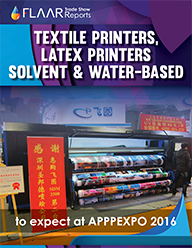









 Download now
Download now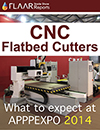



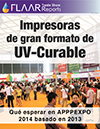




 Download now
Download now








